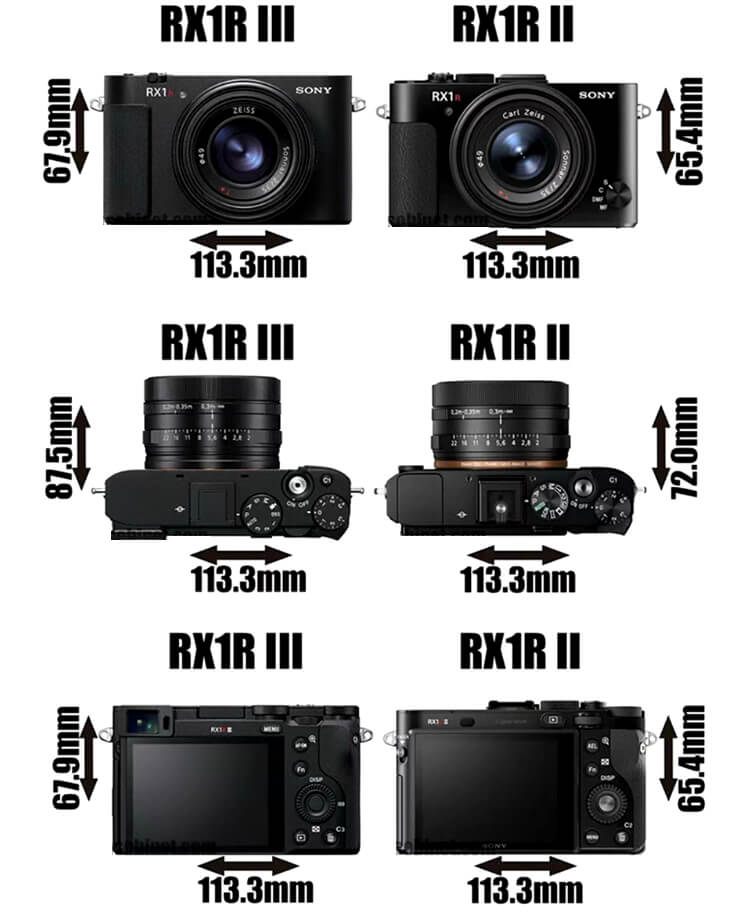As a high-end compact full-frame fixed-lens camera updated after a decade, the Sony RX1R III inherits the series' gene of ultimate portability, maintaining its position as the world's most compact full-frame fixed-lens camera with an integrated body-lens design. Its size is similar to that of the APS-C format Fujifilm X100VI, but it is equipped with a larger full-frame sensor. Weighing only about 500 grams, it is significantly lighter than its main competitor, the Leica Q3, with a volume reduced by approximately 45%. It features the same 61-megapixel Exmor R back-illuminated full-frame CMOS sensor and BIONZ XR image processor as the flagship mirrorless cameras a7CR/a7R V, delivering ultra-high resolution, 15 stops of dynamic range, and excellent high-sensitivity performance (ISO 100-32,000), placing its image quality at the current top level. It is equipped with AI-based subject recognition autofocus, boasting 693 phase-detection points. It supports precise face/eye detection focusing and can recognize various subjects such as animals, birds, insects, and vehicles, representing a qualitative leap in focusing performance compared to its predecessor (RX1R II).
Video capabilities have been enhanced, supporting 4K 30p 10-bit 4:2:2 video recording to meet professional needs. It has a built-in S-Cinetone color science, providing a cinematic look straight out of the camera. It also supports the import of user LUTs (Lookup Tables), enhancing creative flexibility.
Using the NP-FW50 battery, the official CIPA standard battery life has been increased to 520 shots (compared to 220 shots for the previous RX1R II), significantly improving this shortcoming. It cancels the pop-up EVF and adopts a fixed electronic viewfinder (2.36 million dots, 0.7x magnification); the control dial and concave multi-function hot shoe are flush with the top plate, resulting in a cleaner appearance. The 3-inch rear LCD supports touch operations and vertical shooting UI adaptation.
The shortcomings include the continued use of the Zeiss Sonnar T 35mm f/2 lens designed in 2012. Its core parameters such as optical structure, aperture specifications, and minimum focusing distance remain unchanged. It does not incorporate lens optical image stabilization, relying only on in-body digital stabilization and post-processing stabilization solutions, resulting in limited stabilization capabilities in still photography. The EVF resolution remains at 2.36 million dots, the same as the RX1R II from a decade ago, while the Leica Q3 has adopted a higher-resolution EVF. It does not support tilting, which affects the convenience of framing at high and low angles.
With an official price of $5,099, it has seen a significant increase compared to the launch price of the previous RX1R II. The price is already approaching the more high-end Leica Q3 with stronger brand premium. The advantages of the Leica Q3 lie in its brand, 28mm f/1.7 lens, higher-spec EVF/LCD, and overall texture; the core advantages of the RX1R III are its smaller and lighter body, classic 35mm perspective, and potential cost-effectiveness. Compared to the Fujifilm X100VI, the latter has advantages in price, built-in IBIS, film simulations, and a tilting screen; the RX1R III's core strengths are its full-frame image quality, higher resolution, and stronger AF performance.
The Sony RX1R III is a manifestation of engineering skills, successfully packing a top-tier 61-megapixel full-frame sensor and advanced processor into a nearly smallest body, while significantly improving AF, battery life, and video capabilities. Its core value lies in the irreplaceable combination of ultimate portability and top-level image quality. However, the use of a decade-old lens design, conservative EVF, the removal of the tilting screen structure, and the high pricing constitute its main compromises and controversial points. It is destined to be a niche product for specific groups of people rather than an all-rounder.
Related Tags: Sony Sony RX1R III RX1R III

